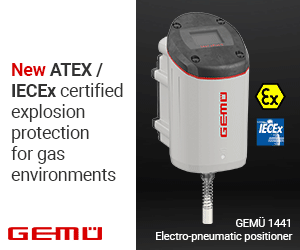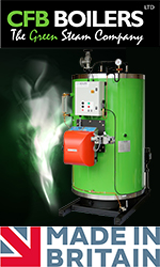Primasonics Acoustic Cleaners Solve The Problems or Material Bridging, Ratholing and Cross Containment Within Silos
Primasonics® Acoustic Cleaners are widely employed wherever ash, dust and powders are generated, processed, stored or transported. This range of acoustic cleaners has been of tremendous benefit in both preventing material hang-up and ensuring maximum, continuous material flow in silos and hoppers. Indeed some of Primasonics most challenging but successful applications were within silos which contained dry materials such as cement.
Primasonics have solved cement storage silo problems in over 40 countries worldwide. The two main problem areas within hoppers and silos are:-
– Ratholing – where the material builds up on the sidewalls causing severely reduced “funnel flow”, which also restricts the silo being used to its full storage capacity.
– Bridging – where the material bridges over the outlet area either severely restricting flow or stopping it completely.
Irrespective as to whether the cement bulk storage facility is under 500 kg or over 30,000 kg capacity Primasonics® Audiosonic™ Acoustic Cleaners have eliminated both of these problems. Typical examples range from small 20 tonne capacity internal pre-packing hoppers right up to 30,000 tonne capacity cement silos. Where the problem is ratholing with the material building up on the sidewalls, a low frequency, larger Primasonics Acoustic Cleaner is mounted on top of each silo to dislodge and thereafter, eliminate the build-up. These units can be located at any position on top of the silo, as sound waves travel at over 344 metres per second and in a 360° radius. Generally speaking they are mounted on top of an existing inspection hatch, thus installation is simple and inexpensive.
Moving on to silo and hopper discharge, in such applications one of the smaller Primasonics Audiosonic™ Acoustic Cleaners with higher frequencies is employed. The higher the frequency the shorter the wavelength and so all the acoustic power created by the Wave Generator is concentrated over a much shorter range – say between 1 and 5 m. Therefore a higher frequency Primasonics® Audiosonic™ Acoustic Cleaner mounted just above the discharge will prevent material bridging and ensure even material flow at maximum rates.
It is important to note and understand several main advantages that Acoustic Cleaners have over alternative methods, which have been employed to try and aid material flow. Primasonics Acoustic Cleaners operate at frequencies very much higher than the resonance frequency of steel, ceramic lining, concrete etc. Therefore Primasonics Acoustic Cleaners are guaranteed not to cause vibrational damage to any vessel or structure. This is quite unlike vibrators, which by their very nature and method of installation, cause vibration and stress weaknesses within the vessel or structure to which they are attached. The vibration resonances first have to pass through the vessel wall before reaching the material. With the Acoustic Cleaner, the higher frequencies are directly absorbed into material giving 100% efficiency.
Air cannons/blasters seek to effect a very localised cure for a blockage problem, which has already occurred. In many cases the air cannon simply “blows” a localised hole through the blockage, necessitating the installation of many air cannons within the general problem area. It is generally true to say that one very rarely finds a single air cannon in effective operation. This is totally the opposite with Primasonics Acoustic Cleaners but then we approach the problem with a totally different philosophy – by preventing the build up from occurring in the first place.
HOW DO THEY WORK IN SILOS & HOPPERS?
Primasonics® Audiosonic Acoustic Cleaners are extremely simple in their operation, requiring only normal plant compressed air for their initial energy source. Compressed air enters the Wave Generator and forces the only moving part, the ultra high-grade titanium diaphragm to reverberate very rapidly within its specially designed housing. These rapid reverberations create the base tone and the different bell sections convert, amplify and distribute this base tone into a range of selected key fundamental frequencies. Primasonics® have selected six such key fundamental frequencies for their Audiosonic Acoustic Cleaner range from 60 Hz to 420 Hz.
There are three key problems that occur in silos which the Audiosonic Acoustic Cleaners can eliminate, the first of these is bridging, this is caused when the design of the hopper section has insufficient angle of repose, side walls with excessive frictional properties or an insufficiently sized outlet for the material being contained. Consequently these problems can become severe if a silo is used for materials different to that it was designed for either through process or plant layout changes over time. To combat bridging an Acoustic Cleaner is mounted just above the outlet, when this sounds single particles and clusters of particles move at different speeds therefore bridges are collapsed and material flow is restored. Once the Acoustic Cleaner has ceased to sound new bridges and arches will begin to form, to counter this the sounding may be controlled in one of two ways either simply on a timer device typically set for a few seconds every 10 minutes or alternatively it can be controlled automatically via a flow sensor downstream of the outlet or even from load cells.
The next is Ratholing – Ratholing or funnel flow occurs when an insufficient angle of repose is used in the silo for the contained material this usually occurs with material that displays a mechanical interlocking properties or very quickly bonds without compaction for example by means of solvent evaporation. To defeat Ratholing Acoustic Cleaners with a long wave length are placed on the top of the silo usually through an existing manhole or inspection hatch. If there is a large amount of hardened material that has build-up over a long period the silo is then cleaned using traditional offline cleaning methods such as the Gyro Whip system. This is because if an Acoustic Cleaner were to be sounded in a silo with these very thick hardened build ups, and the adhesion forces between particles were greater than those between the particles and the walls of the silo, there is a risk that large lumps of material may dislodge and block the outlet. This is due to the power of the low frequency Acoustic Cleaners which continue to sound their transmission through the bulk material until the solid and reflective surface of the silo wall is reached. If we consider a full silo that is prone to Ratholing being slowly emptied we can imagine the central core of the material lowering small amount while an outer ring close to the side walls remains at the same height. Without acoustic cleaning this process would continue until eventually the central core had been discharged and the outer ring is left adhering to the side walls. The process control engineer must now decide whether to remove the silo from active process lines while offline cleaning takes place or refill the silo and risk lower control over the quality of product as older adhered material will mix with the new material coming in. Using Acoustic Cleaners once the central core has lowered slightly the Acoustic Cleaner will sound the bonds holding the outer ring will collapse and this will form a flat surface along the top of the material in the silo. This pattern is repeated as the silo empties even if the silo is refilled before complete discharge has taken place. This now allows a first in first out mass flow pattern. Again the Acoustic Cleaner can be controlled by a simple timer or a PLC or central control system.
The third area in silos and hoppers where Acoustic Cleaners can help is in preventing material cross contamination, if we take the example of a weigh hopper sometimes not all the material is discharged before the next batch enters the weigh hopper, this can lead to product contamination which can lead to quality control problems. The reasons for material failing to discharge from hoppers are similar to those already mentioned but in weigh hoppers or similar batch filled vessels an additional problem when material hitting or contact with colder side walls and moisture precipitates from the bulk material onto the side wall. This moisture forms a meniscus between the side wall and the particles which holds the powder in place so that even after discharge a thin layer or powder remains in this instance the Acoustic Cleaner is activated when the bin is being emptied the alternate compressive and rarefactional forces break the surface tension of the moisture and allow this material to flow out leaving the vessel completely empty.
Acoustic Cleaners are easy to install, for example on existing silo top hatches, they only require standard plant compressed air, are virtually maintenance free and can eliminate severe material build-up on silo sidewalls and preventing any future re-occurrence.






























































































































